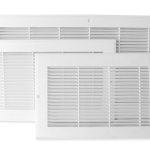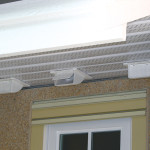 Plastic is one of the most versatile materials on earth. Think about all of the things we use every day that contain plastic: phones, cars, computers, televisions all contain some, but it’s used even more in our homes.
Plastic is one of the most versatile materials on earth. Think about all of the things we use every day that contain plastic: phones, cars, computers, televisions all contain some, but it’s used even more in our homes.
We rely on it for everything from insulating the wires in our walls, water pipes, window frames, and even providing a comfortable seat on our toilets. Plastic has proven itself over decades, and can be produced in so many variants it can accomplish a huge variety of tasks.
When it comes to choosing vent covers for your next construction project or renovation, consider using plastic ones. Polypropylene, and polystyrene are two of the most commonly used plastic resins. The first is more resistant to impacts, the second is more resistant to heat. Each is a valuable asset, and understanding the differences will help you choose the right fit for what you need.
Outdoors, durability is vital for wall vent caps and roof vent caps. They have to stand up to everything from rain and dust, to snow, ice and hail. They need to take a hit without breaking, and also support significant weight. That’s why polypropylene is an ideal choice for outdoor use. It brings the strength to deal with environmental challenges, but is unlikely to be threatened by extremely high temperatures. UV protectors can be added to polypropylene resins as well, allowing them to stand up to years of hot sun.
Indoors is another story. Vents inside a home are rarely tested physically. A good interior vent should maintain its position at the end of a duct and be solid enough to hold itself in place. Resistance to impact is less important than tolerance to high temperatures in HVAC ducts. Instead of polypropylene, your indoor vent covering should be polystyrene. Heat registers, whisper grilles and return air grilles can warp without enough heat resistance.
Polystyrene delivers that protection, and is also more rigid than polypropylene helping them last for years.
Plastics already play a big part in a warm and comfortable home, but choosing the right plastic is vital to ensuring it does what you want it to. Take the time to understand what goes into the plastic components you’re buying for your next project, and you’ll help ensure long term satisfaction with their performance.



